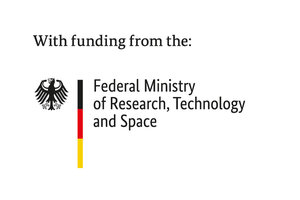HiCONNECTS

Heterogeneous Integration for Connectivity and Sustainability
The overarching goal of HiCONNECTS is to address key societal and industrial challenges. The project wants to overcome two of the most important obstacles of the current state of the art: the transmission of Internet of Things (IoT) data over the IT network and the sensing of objects to enable "Highly Automated Driving" (HAD). Therefore, as a first goal, core heterogeneous integration (HI) technology solutions for energy-efficient and high-performance wireless/wired cloud and edge computing solutions, as well as automotive radars, will be developed. The second and directly related goal is to use these HI components to develop solutions in socially and economically important areas, focusing on Radio Frequency technologies (WiFi, 5G/6G, and radar) and IT data growth infrastructures (network cards and switches) for advancing vertical sectors such as connected vehicles, smart cities, and connected industry.
In the HiCONNECTS project, microelectronics serves as an innovation driver for the safe design of electronic components and systems as well as for heterogeneous integration. That means multiple different components will be integrated into one system. HiCONNECTS aims to develop heterogeneous integration technologies and devices for next generation electronic components and systems (ECS) that will support network devices, WiFi 7, 5G/6G and radar technology and cover most of the ecosystem value chain.
Barkhausen Institut is involved in two aspects of this project:
- We will develop Radio Frequency Antennas for automotive radars. The main goal is to boost the gain and the isolation between the transmitting (Tx) and receiving (Rx) antennas in full-duplex radar operation. To achieve that, a radar system must transmit and receive signals simultaneously on the same frequency channel. Apart from traditional methods, metamaterials (artificial materials) will be used without any additional power consumption, in mmWave frequencies.
- We will also focus on integration of the mmWave antennas into radar chipsets, followed by evaluation of radar performance. The emphasis is on low-cost chip-to-board interconnect development
Besides Barkhausen Institut, partners include several companies, universities and research institutions (all total 64).
The project is funded by the European Union and the German Federal Ministry of Education and Research (Bundesministerium für Bildung und Forschung – BMBF). Views and opinions expressed are however those of the authors only and do not necessarily reflect those of the European Union, the Key Digital Technologies Joint Undertaking nor the BMBF. Neither the European Union, the Key Digital Technologies Joint Undertaking nor the BMBF can be held responsible for them.
Project Duration: January 2023 - December 2025
Contact: Dr. Padmanava Sen padmanava.sen@barkhauseninstitut.org
Cooperation partners: All 64 partners can be found here: https://www.hiconnects.org/


